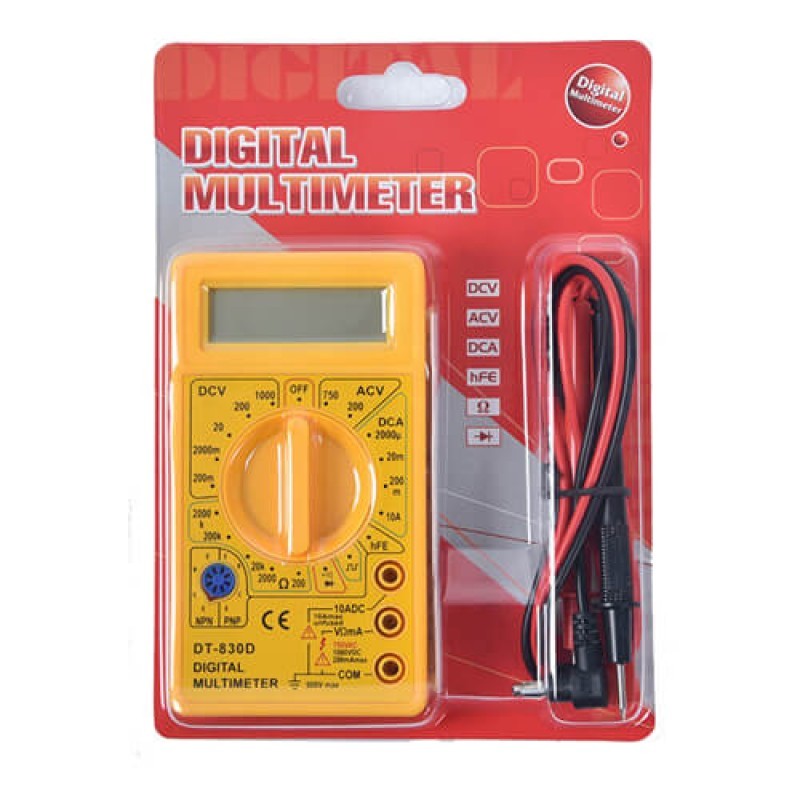
Price :
৳490
Estimated Shipping Time: Deliveries take up to 3-5 days after you place your order.
Product SKU: gvv74760rO
Digital Multimeter Model: DT-830D, Made in China
Common
Uses:
·
Measuring
Voltage (AC/DC):
o
DC Voltage: Measure the voltage of batteries, power supplies, and
circuits.
o
AC Voltage: Measure household electrical outlets, appliances, and other
AC power sources.
·
Measuring
Current (DC):
o
Useful for measuring current in
circuits, automotive applications, and electronic devices.
·
Measuring
Resistance:
o
Check the resistance of resistors,
wires, and other components.
o
Useful for troubleshooting and
verifying circuit continuity.
·
Diode
Testing:
o
Test the functionality of diodes and
semiconductor devices.
·
Continuity
Testing:
o
Check if a circuit is complete and
continuous. The meter beeps if the circuit is continuous.
·
Transistor
Testing:
o
Some models, including the DT-830D,
can test transistors by measuring their hFE (DC current gain).
If you'd like to know more about this chemical or need any analysis
report regarding this chemical then contact us support@echem.com.bd
Steps
for Using the DT-830D:
·
Turn the rotary switch to the
appropriate voltage range (e.g., 200mV, 20V, 200V).
·
Connect the red probe to the VΩmA
port and the black probe to the COM port.
·
Place the probes across the
component or circuit where the voltage needs to be measured.
·
Turn the rotary switch to the
appropriate current range (e.g., 200µA, 20mA).
·
Connect the red probe to the VΩmA
port (for lower currents) or the 10A port (for currents up to 10A) and the
black probe to the COM port.
·
Place the probes in series with the
circuit under test.
·
Turn the rotary switch to the
appropriate resistance range (e.g., 200Ω, 20kΩ).
·
Connect the red probe to the VΩmA
port and the black probe to the COM port.
·
Place the probes across the resistor
or component to measure its resistance.
·
Turn the rotary switch to the diode
symbol.
·
Connect the red probe to the anode
and the black probe to the cathode of the diode.
·
A typical forward-biased diode
should show a voltage drop (typically around 0.7V for silicon diodes).
·
Turn the rotary switch to the
continuity testing symbol (often depicted as a sound wave).
·
Connect the probes to the two points
in the circuit.
·
The meter will beep if the circuit
is continuous.
·
Turn the rotary switch to the hFE
range.
·
Insert the transistor's leads into
the corresponding hFE sockets (E, B, C) on the multimeter.
·
The meter will display the hFE
value.
No Review Found.
Login To Comment